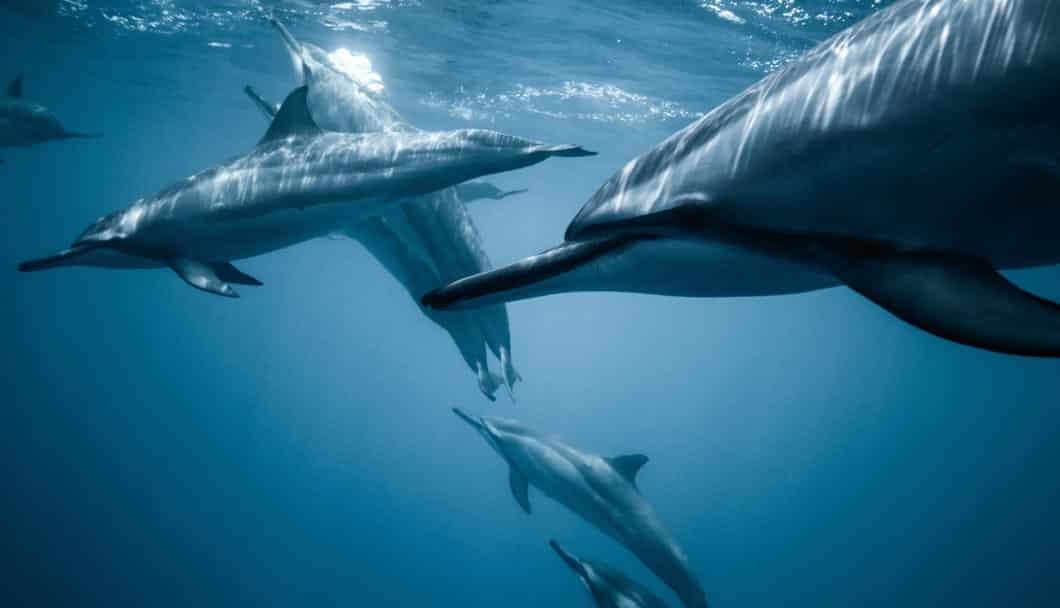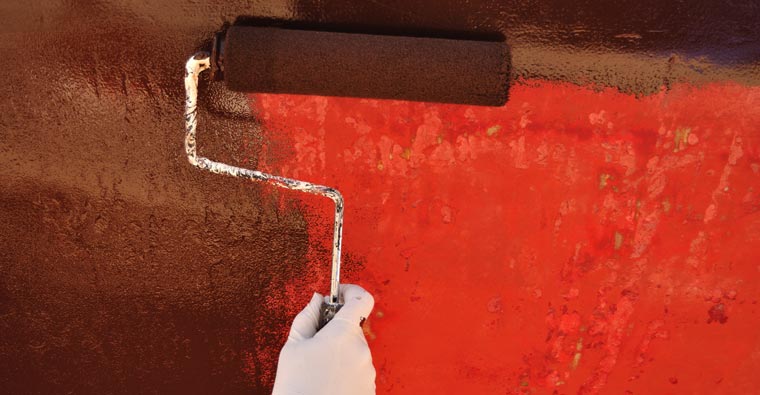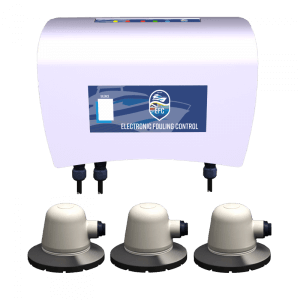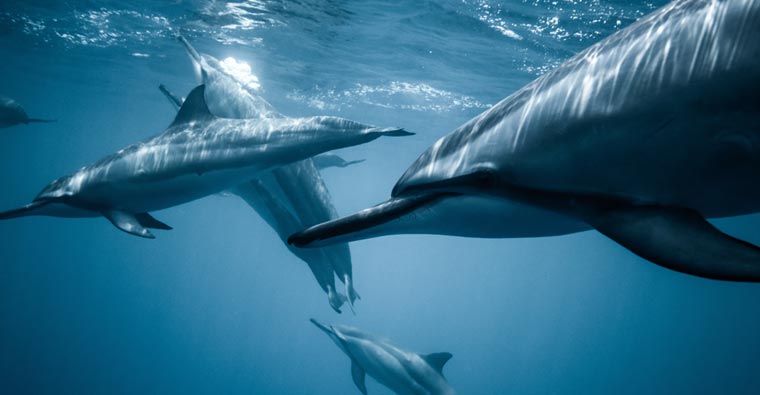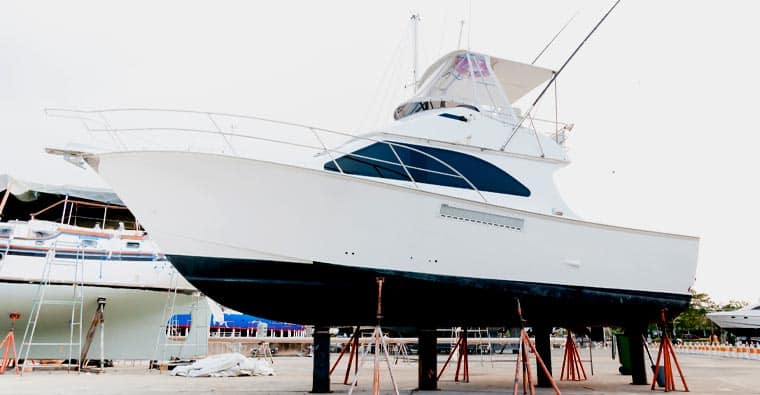Antifouling the bottom of your boat is key to optimising fuel efficiency by reducing friction caused by the build up of marine organisms, such as barnacles, on the hull, rudders and propellers of your boat. However, antifouling paints can have a huge impact on marine life and the wider marine environment from the small invertebrates you can barely see, to the fish you eat and larger mammals like sea lions too.
The issue with traditional antifouling paint
Antifouling paint particles are loaded with toxic biocides that are released into the marine environment whilst the boat is in the water. These compounds are designed to kill of any algae and small organisms that attach to the hull of the boat but, in doing so, do damage to other aquatic life and require reapplication on an annual basis.
Biocide and heavy metal release
According to a 2021 study, the majority of antifouling pollution is related to boat maintenance and located around boatyards and port areas, therefore maintaining good practice when removing and reapplying antifouling paint is paramount to preventing the build up of bottom paint particles in our oceans.
Furthermore, in a large proportion of anti fouling paint the main biocide used is copper. Copper is a heavy metal that has been shown to accumulate in the food chain, damaging not only marine life but with potential effects on humans through fish consumption.
Microplastics
Another huge source of pollution from antifouling paints is microplastics, particularly from self-polishing paints. These paints contain polymers and biocide which is designed to slough off as the boat moves through the water, leaving what is effectively a chemical skid mark behind vessels, as described in a separate study.
All boat owners should be taking responsibility for helping to keep our waterways and oceans clean. Here are a few ways by which you can help when it comes to antifouling your boat.
Ultrasonic antifouling is the eco friendly solution to marine fouling. It uses transducers attached to the outer hull that emit pulses of ultrasonic waves, preventing (or at least making it very difficult) for any bio foul or small marine organisms to attach to. These microscopic organisms provide the food for larger bio fouling organisms such as tube worms, zebra mussels and barnacles so, in turn, these will not adhere to your hull.
These ultrasonic waves do not harm humans or marine organisms nor do they interfere with marine animals that use SONAR, making ultrasonic antifouling a great eco friendly antifouling choice whilst still improving fuel efficiency.
Ultrasonic technologies can be applied over previously painted surfaces and work to create areas of negative and positive pressure. This results in micro jets surrounding the boats hull leading to the destruction of the single cell micro organisms such as algae and forming an invisible protective shield around the boat’s hull. This smart solution is connected to a control unit that is intelligently controlled to ensure the optimum power is delivered for optimum cleaning effectiveness.
The Green Blue, who have a huge ‘Protect, Collect and Dispose’ antifouling initiative alongside the British Coatings Federation and The Yacht Harbour Association support the use of ultrasonic antifouling methods in favour of traditional biocide-containing paints for preventing the accumulation of underwater metals.
Ultrasonic anti fouling is suitable for a large range of boats and can even be used on sea chests and other areas where it is difficult to paint or clean to prevent fouling. At EFC we have a huge range of products available for all different boat types and sizes, all of which you can view in our brochure or you can contact us directly for help deciding which product is best for your boat.
Environmentally friendly antifouling coatings
Here is a quick guide to a few of the alternatives to copper paint you could use either instead of or alongside our ultrasonic antifouling technology.
Copper-free Zinc-based paints
Zinc is an active copper free biocide that has been shown in some cases to be even more effective than copper when using nanoparticle technology. But using zinc bottom paint does still have detrimental impact on the environment, accumulating both in the water and sediment.
Zinc is also used as an additive to other copper-free antifoul coatings to help aid polishing and, in many marinas, the levels of zinc from antifoul paints already exceeds what is considered safe by the Environmental Quality Standards.
Hydrogel technology
Also known as hydrophilic antifouling paints, hydrogels absorb water to create a boundary layer, preventing marine organisms from getting to the hull to attach. They do, however, still contain polymers (plastics) which need to be disposed of responsibly and could possibly contribute to the issue of microplastics in our oceans.
Enzyme-based antifouling paints
A type of indirect antifouling which uses enzymes as an active biocide release mechanism. The enzymes in the coating gradually break down an inert substance (such as starch) to release a biocide (such as hydrogen peroxide) into the water which kills the marine growth.
Although there is no release of heavy metals, these methods still release biocides which can have an impact on the marine environment, of which there is little research currently. As well as this they lose effectiveness over time and need to be reapplied regularly.
Non-stick antifouling coating
Super smooth coatings can be applied to the boat hull to create a non-stick coating, often not needing to be replaced for multiple seasons and eliminating paint buildup. There is a catch though, these coatings do not prevent biological fouling from attaching, they instead provide the hull with self-cleaning capability but only above certain speeds (a minimum of 15 knots, 75% of the time).
Biomimicry
Biomimicry is the process of mimicking something in nature and adapting it for a different use. A special type of antifouling coating being developed mimics sea urchin shells which don’t suffer from algal growth. These coatings come in sheets and are glued to the hull of the boat to prevent algal growth or slime from attaching.
As with all antifouling sheet coatings they cannot be used on many parts of the vessel that other forms of antifouling can treat.
Take home messages
- Boat owners should be taking more responsibility for helping to reduce pollution from antifouling such as reducing boat bottom cleaning in the water and using less damaging paints.
- Traditional antifouling paints are damaging our marine ecosystems and should be avoided wherever possible.
- Ultrasonic antifouling is a great alternative to bottom paint for preventing marine growth on boat bottoms and requires no chemicals and is easy to install.
- Other hull coatings and environmentally friendly ablative paint with a copper free formula have been developed which are more eco friendly than traditional alternatives.
- If you must use copper based paints then stick to The Green Blue’s Protect, Collect and Dispose initiative advice for preventing pollution when antifouling, disposing any antifouling paint and scrapings as hazardous waste.
Contact our team for more information on any of our ultrasonic antifouling systems.
